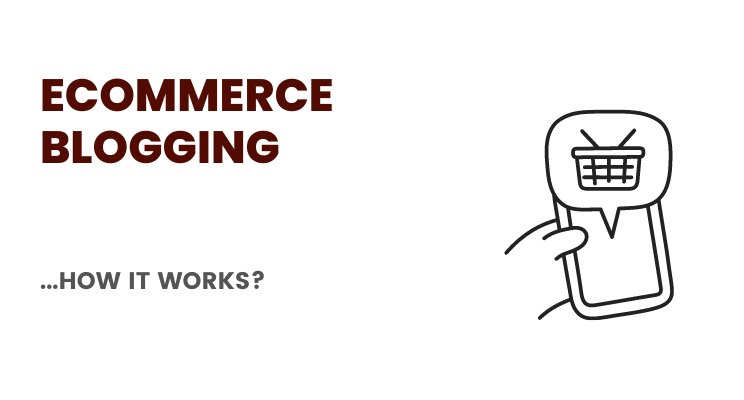eCommerce blogging is critical. Yet, most brands don’t even bother to say eCommerce and Blogging in the same sentence. Somehow, eCommerce brands lean towards paid ads (if at all).
Depending on “Word of mouth” and social media alone is even worse. Not doing anything at all when it comes to marketing your eCommerce brand or doing anything to help promote your eCommerce store is an outright sin.
eCommerce Blogging — as a part of overall content strategy — isn’t just for “blogs”, “online publications”, “SaaS Businesses”. Blogging for eCommerce directly gets you traffic (I won’t say “free traffic” ever, since you pay with your time and effort).
Read:
You are doing eCommerce Marketing all Wrong: Do it This Way
How (&Why) eCommerce Blogging Works?
eCommerce blogging is powerful (and often ignored) because it allows you to:
- Build your brand organically, and for brand equity or brand recall
- Open up avenues for engagement with the whole world
- Expand your reach (without having to pay through your nose for that privilege)
- Attract new customers
- Helps you with customer retention.
- Nurture relationships with both existing and new customers
- Throw in some wiggle room for a taste of what your brand is all about, without asking for a credit card payment upfront
- Generate leads
- Make sales (through explicit calls to action within blog posts, just as you’d setup calls to action for regular blog posts)
How to make eCommerce Blogging Work
Primarily, you are looking at an expansive and comprehensive content marketing strategy and search optimization when you decide to use eCommerce and blogging together.
Here’s what you need to ensure that eCommerce and Blogging Truly work like a charm for your eCommerce brand:
Content-driven Awesomeness
By starting a blog for eCommerce businesses, you essentially embrace content strategy. Lead by content to inspire, educate, entertain, teach, and help your customers make informed decisions.
Focus on topic clusters that relate to your brand or business.
You don’t just aim to sell; you influence your entire set of potential (and existing) audiences to lean towards your brand.
Add value to the content you create by sharing news, enunciating on trends, and discussing insights (in your industry).
Embrace Goal-based Blogging
You can open your heart out and write articles to inspire. Pack as much information as you can within a blog post. Let your passion show in every word you write.
This could have been great advice for a “hobby blogger”. Your eCommerce business needs all of that plus the ability to show some results for the effort you put in.
Goal-based blogging — while sticking to the passion, love, and the heart part — enables you to:
- Measure realistic goals for your business.
- Use data visualization to get a clear picture of how your blog performs
- The traffic your website gets due to blogging or content strategy
- The number of leads generated thanks to content marketing or blogging alone or both, and
- The number of sales accrued each period.
The only metrics that matter for your eCommerce brand are the real results generated (No vanity metrics please).
Build On Your Brand
How you write blog posts, what you write about, the tone of voice used, and brand-specific style of writing — these could be your branding elements.
Use your blog to tell stories, harness the power of reach, open the doors to frictionless connections, and leave the gates open for dialogue.
Your blog — in essence — becomes your megaphone. Express your style, voice, tone, and the “personable” part of your brand using your blog posts.
Stick to a Publishing Velocity
Earlier, I wrote how SEO is overrated and that so many businesses waste millions of dollars trying to “game the system”.
No one’s stopping you from going full steam ahead on SEO (do it, if you can). The least you could do for eCommerce brands is that you ought to publish regularly.
There’s no escaping the absolute and basic need for Publishing Velocity — a fixed cadence or frequency of publishing that you have to stick to.
Skip that, and you might as well save time and money doing something (like Paid ads, which is fine as well).
Once a week, twice a week, thrice a week, once a month. Pick your frequency and stick to it. More than 22+ well-known businesses grew only thanks to unbelievable consistency with blogging.
Why shouldn’t you?
Now, don’t just put up an act just because eCommerce blogging is powerful.
eCommerce blogging is not:
- Random 350-500 words about your product
- Disorganized mess that closely resembles a blog (or should we call it a crappy journal of some sort?).
- Bunch of product photos and eCommerce product descriptions thrown together to make it look like a blog post.
- No hype. No sales pitches (just a few prompts, calls to action, and gentle judges are fine)
Looking for inspiration? Here are at least 8 eCommerce brand examples to learn from.
Do you have a blog for your eCommerce brand? Have you thought about the potential eCommerce blogging has for your business?
Tell me all about it on Twitter, LinkedIn, or my LinkedIn Brand page.

